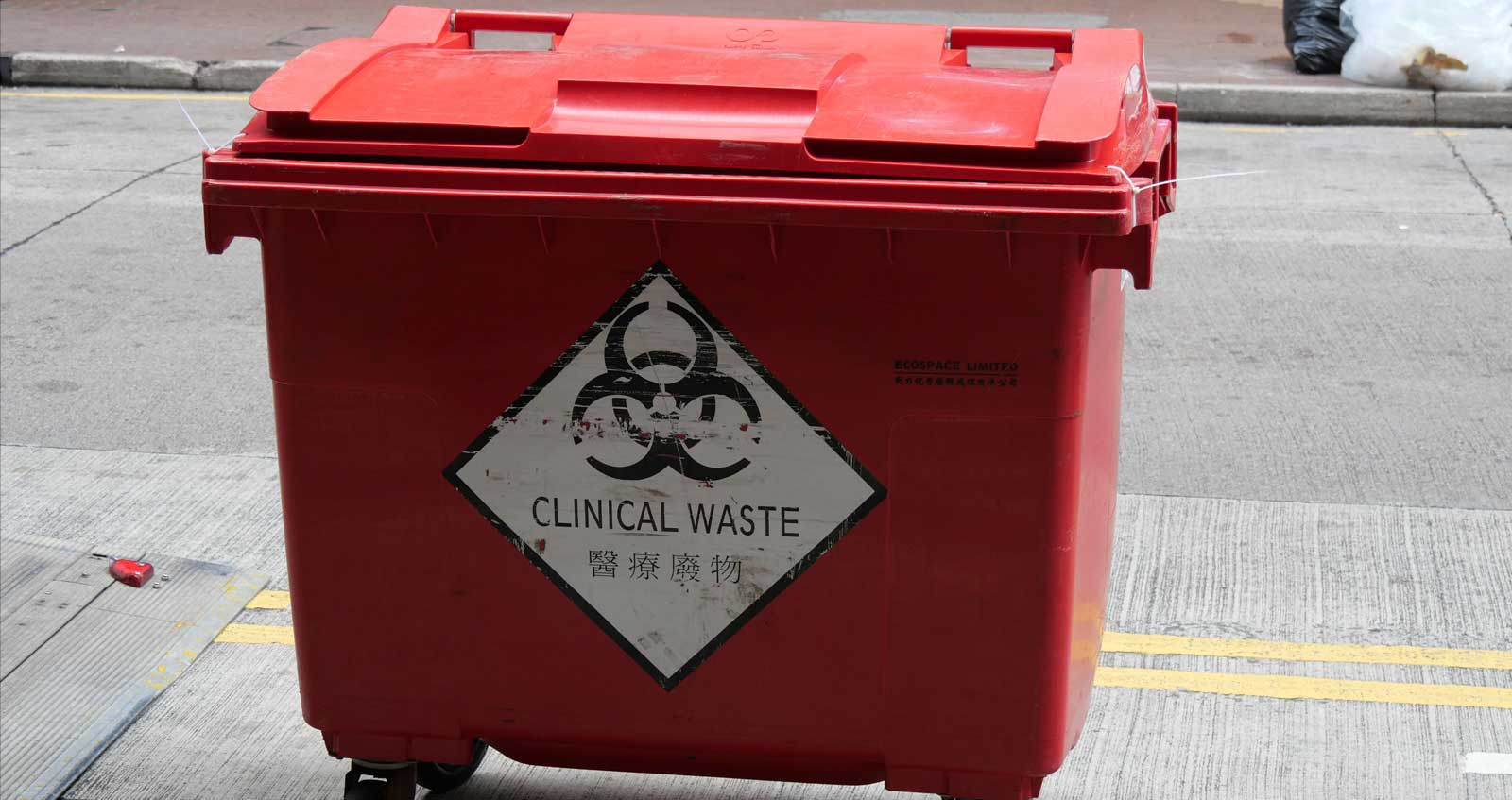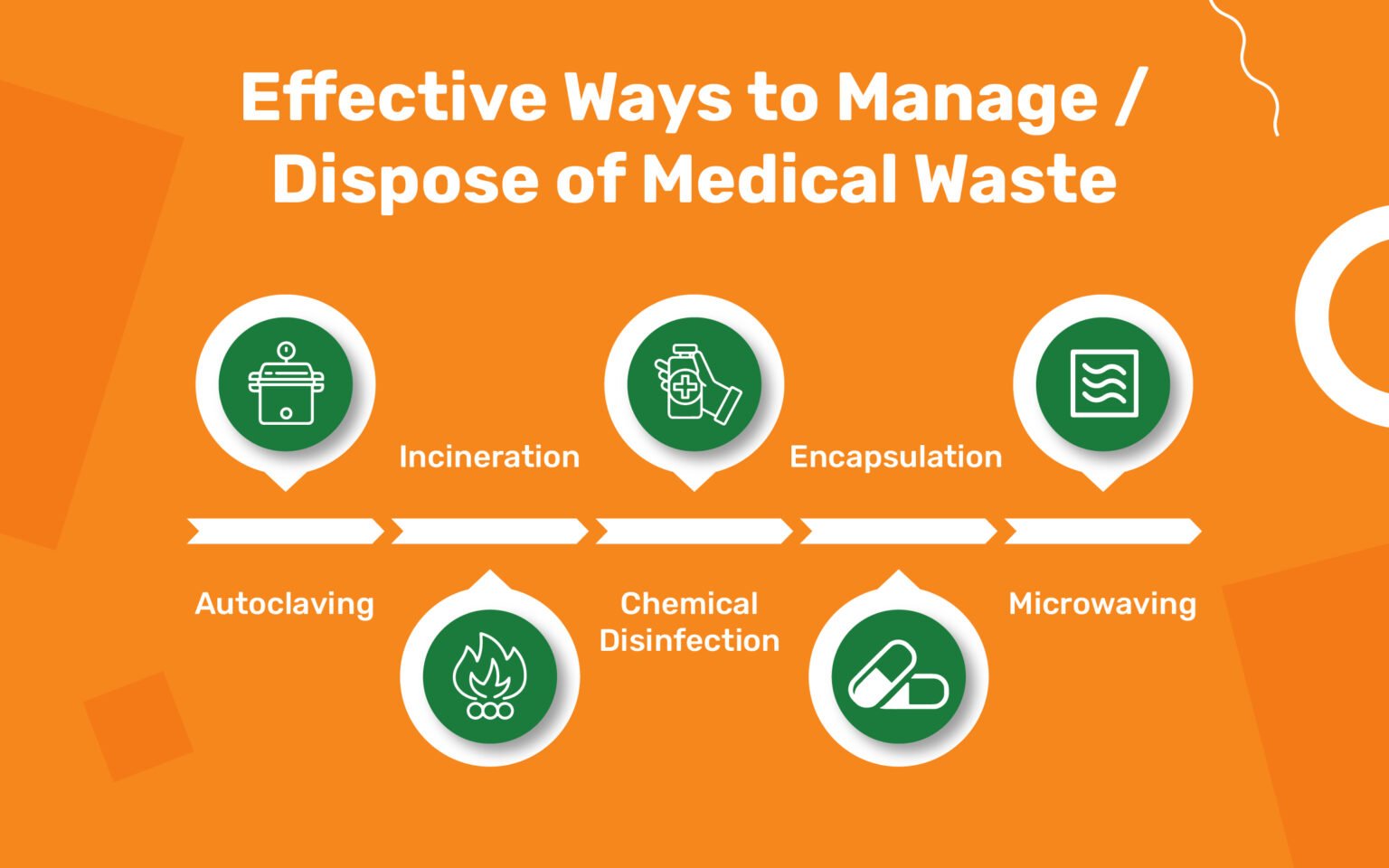Your Relied On Companion: Medical Waste Removal Services Tailored to Your Demands
Your Relied On Companion: Medical Waste Removal Services Tailored to Your Demands
Blog Article
The Value of Proper Clinical Waste Disposal: An Overview for Medical Care Facilities
Correct medical waste disposal is a crucial element of healthcare center management, making sure the security and health of individuals, personnel, and the atmosphere. From comprehending the various classifications of clinical waste to following regulative demands, medical care facilities need to adopt reliable waste segregation techniques and select proper disposal techniques. However, the relevance of proper clinical waste disposal exceeds plain conformity; it is a responsibility that calls for recurring training and education and learning for staff. In this guide, we will check out the various facets of clinical garbage disposal and highlight the important steps that healthcare facilities must take. By carrying out these techniques, health care facilities can mitigate risks, safeguard public health and wellness, and add to a cleaner, safer setting.
Comprehending Medical Waste Categories
Recognizing medical waste categories is vital for appropriate disposal in health care centers. Clinical waste is a broad term that incorporates various sorts of waste created in health care settings, such as labs, medical facilities, and centers. Classifying clinical waste helps make sure that it is taken care of, kept, and disposed of securely and based on applicable guidelines.
There are a number of categories of medical waste that health care centers need to be knowledgeable about. These classifications include transmittable waste, sharps waste, pharmaceutical waste, chemical waste, and radioactive waste (medical waste disposal services with WasteX). Each classification has particular qualities and calls for different disposal methods to reduce the threat of injury to health care employees, clients, and the setting
Transmittable waste, for instance, describes waste contaminated with potentially transmittable products, such as blood, body fluids, and tissues. Sharps waste consists of needles, syringes, and various other sharp things that can cause injury or send infections. Pharmaceutical waste contains expired or unused medicines, while chemical waste includes unsafe chemicals used in clinical procedures. Last but not least, contaminated waste includes products polluted with radioactive compounds, such as nuclear medicine materials.
Compliance With Regulatory Requirements
Healthcare facilities have to guarantee conformity with governing requirements for proper clinical waste disposal. Governing bodies, such as the Epa (EPA) and the Occupational Safety And Security and Health Administration (OSHA), have developed guidelines and regulations to guard public wellness and the atmosphere. These guidelines lay out the appropriate handling, storage, transport, and disposal of medical waste.
Compliance with regulatory demands is vital for medical care centers to prevent lawful penalties, reputational damages, and potential harm to human health and the environment. Failing to comply with these laws can cause penalties, lawsuits, and also the suspension or revocation of operating licenses.
To make certain conformity, health care facilities must develop detailed waste administration programs that consist of team training, proper waste partition, and making use of appropriate containers and tags. Routine audits and evaluations must additionally be conducted to recognize any kind of non-compliance issues and resolve them promptly.
It is vital for medical care centers to keep up to day with modifications in laws and update their waste monitoring techniques accordingly. This can be achieved by actively monitoring updates from regulatory bodies and joining training programs and workshops.
Implementing Efficient Waste Partition Practices
To make certain appropriate medical waste disposal, health care centers should carry out effective waste segregation practices. Waste partition is a critical action in the overall waste management procedure, as it assists reduce the risk of infection, stops cross-contamination, and makes certain the risk-free disposal of different kinds of waste. Efficient waste segregation practices involve separating medical waste right into different classifications based on its features and prospective dangers.
One usual practice is the partition of sharps waste, such as scalpels and needles, from other kinds of medical waste. Sharps waste must be put in puncture-resistant containers to avoid injuries and possible infections. Additionally, contaminated materials, such as chemicals and drugs, ought to be divided from basic clinical waste to prevent ecological contamination.
Correct labeling and color-coding of waste containers are vital for effective waste segregation. Visible and clear tags need to be put on each container to show the type of waste it includes and any special delivery demands - medical waste disposal services with WasteX. Additionally, color-coding can be used to distinguish in between various waste groups, making it easier for medical care personnel to identify and dispose of waste correctly
Routine training and education and learning for medical care team is important for the successful execution of waste segregation techniques. Personnel participants must be educated on the different waste groups, proper segregation techniques, and the importance of following waste this website monitoring procedures. This will certainly assist guarantee conformity and uniformity in waste segregation methods throughout the center.
Picking Appropriate Disposal Methods
Appropriate selection of appropriate disposal techniques is essential in making sure the safe and ecologically accountable management of clinical waste in healthcare centers. Healthcare facilities generate a selection of medical waste, including sharps, transmittable waste, pharmaceutical waste, and chemical waste - medical waste removal near me. Each type of waste calls for specific disposal techniques to minimize the threat of contamination, injury, and ecological injury
One usual disposal technique for clinical waste is incineration. Incineration involves the controlled burning of waste at high temperature levels.

Chemical disinfection is an additional method utilized for sure types of medical waste, such as pharmaceutical waste. This technique makes use of chemicals to neutralize or ruin contaminants. It is important to choose chemicals that are ecologically friendly and safe.
Sometimes, land fill disposal may be appropriate for non-hazardous clinical waste (medical waste disposal services with WasteX). Proper segregation and packaging are essential to prevent leak or contamination.
Inevitably, healthcare centers have to very carefully assess use this link the attributes of their medical waste and select ideal disposal techniques that prioritize safety and security, environmental defense, and governing conformity. Regular training and tracking are important to make sure that medical care team follows correct disposal methods.

Training and Educating Team on Appropriate Disposal Treatments
Staff education and training play an important duty in ensuring the proper disposal of clinical waste in medical care facilities. It is essential that all team member, including medical professionals, nurses, professionals, and support personnel, receive detailed training on correct disposal treatments. This training must cover the various kinds of medical waste, their potential threats, and the ideal methods for dealing with, setting apart, and taking care of them.
One of the main goals of staff education and learning and training is to ensure that all healthcare experts recognize the value of appropriate disposal procedures and the prospective medical waste disposal services with WasteX effects of incorrect waste administration. They need to be knowledgeable about the dangers connected with clinical waste, such as the transmission of infections and the contamination of the environment. medical waste removal services. By recognizing these dangers, personnel will be much more inspired to adhere to appropriate disposal protocols and take the essential precautions to secure themselves, their associates, and the area
Educating need to also cover using personal protective devices (PPE) and the proper methods for handling medical waste. Team participants must be enlightened on just how to recognize and segregate various kinds of waste, such as sharps, transmittable waste, and harmful chemicals. They should also be trained on the appropriate use waste containers, such as sharps containers and biohazard bags, in addition to the significance of labeling and sealing these containers appropriately.
In addition, team education and training need to consist of regular updates and refresher programs to make sure that medical care professionals remain informed about the most up to date laws and finest practices in clinical garbage disposal. This continuous education and learning is essential to keep a high level of understanding and conformity amongst employee.
Verdict
In final thought, correct medical waste disposal is of utmost relevance for health care centers. Understanding the different groups of medical waste and conforming with governing demands makes certain the safety and well-being of both medical care workers and the general public.
From comprehending the different categories of clinical waste to conforming with regulatory demands, health care centers must embrace reliable waste partition methods and pick ideal disposal techniques. These categories include infectious waste, sharps waste, pharmaceutical waste, chemical waste, and radioactive waste.To make sure correct clinical waste disposal, health care centers must implement reliable waste segregation techniques. Waste segregation is an important step in the overall waste monitoring procedure, as it aids lessen the risk of infection, stops cross-contamination, and makes sure the risk-free disposal of various kinds of waste. Healthcare facilities produce a selection of clinical waste, consisting of sharps, contagious waste, pharmaceutical waste, and chemical waste.
Report this page